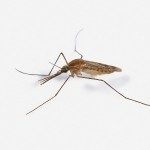Lien vers Pubmed [PMID] – 19877808
Lien DOI – 10.1089/vbz.2009.0042
Vector Borne Zoonotic Dis 2010 May; 10(4): 391-402
Diseases caused by arthropod-borne viruses are a significant threat to the health of human and animal populations throughout the world. Better knowledge of the molecules synthesized in the salivary gland and saliva of hematophagous arthropods could be of use for improving the control of pathogen transmission. Recently, a sialome analysis of three Aedes aegypti mosquito colonies (PAEA, Rockefeller, and Formosus) carried out in our laboratory allowed us to identify 44 saliva proteins. Of these secreted proteins, none was exclusively expressed in one colony, suggesting that expression of salivary proteins is highly conserved across populations. In another study, we reported that some of these salivary proteins could be used as the genus-specific markers for travelers’ exposure to mosquito vectors. Here, comparison of salivary gland protein profiles between these same three Ae. aegypti colonies was performed using the one-dimensional sodium dodecyl sulfate polyacrylamide gel electrophoresis (SDS-PAGE) difference gel electrophoresis method. As observed at the saliva level, no significant differences were detected between these three colonies. The salivary gland protein repertoire from the Ae. aegypti mosquito was analyzed using a proteomic approach. One hundred and twenty proteins were identified in these salivary glands representing the largest description of the Ae. aegypti salivary gland protein catalog. We succeeded in identifying 15 secreted proteins, some of which have already been reported as being involved in blood feeding. A comparison of the proteins identified between the salivary glands and the sialome is discussed.





